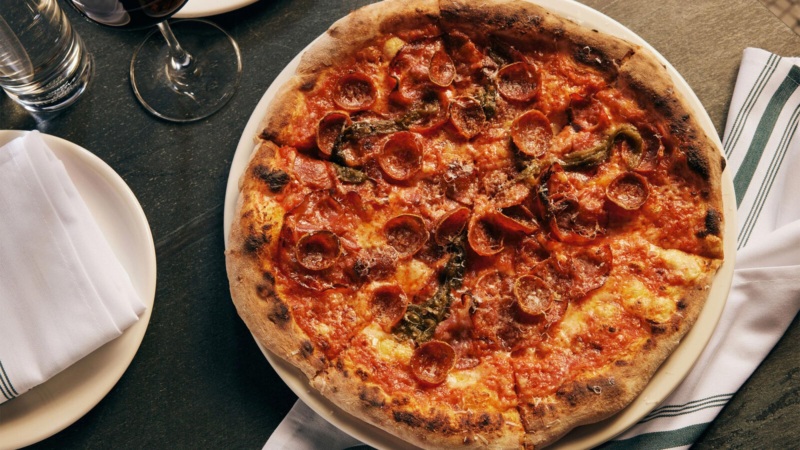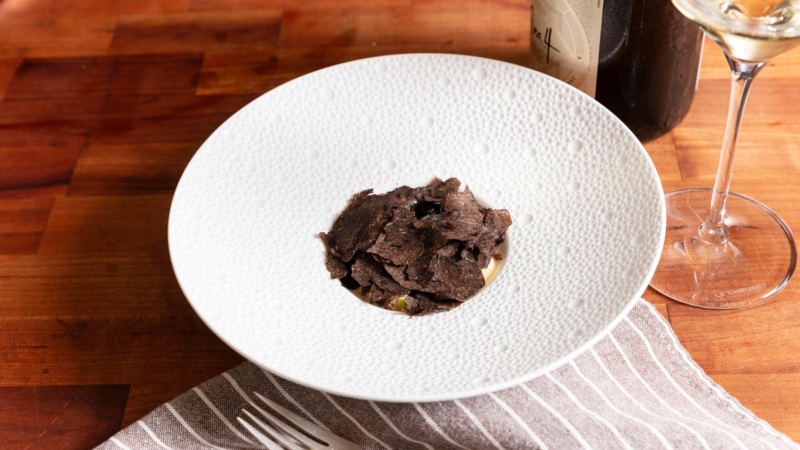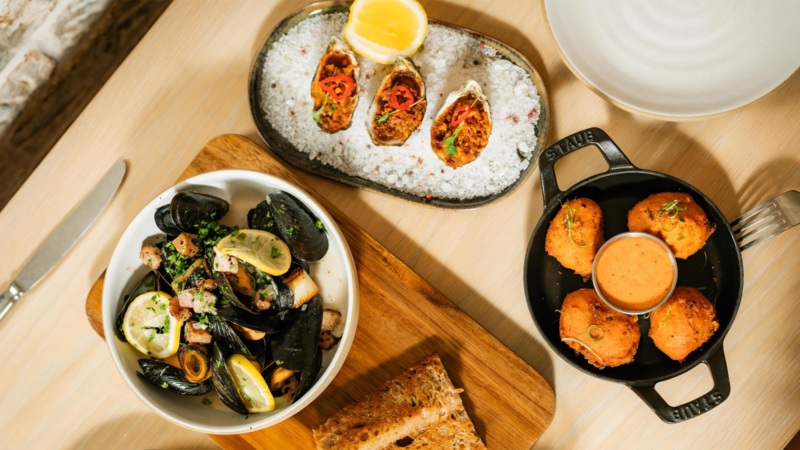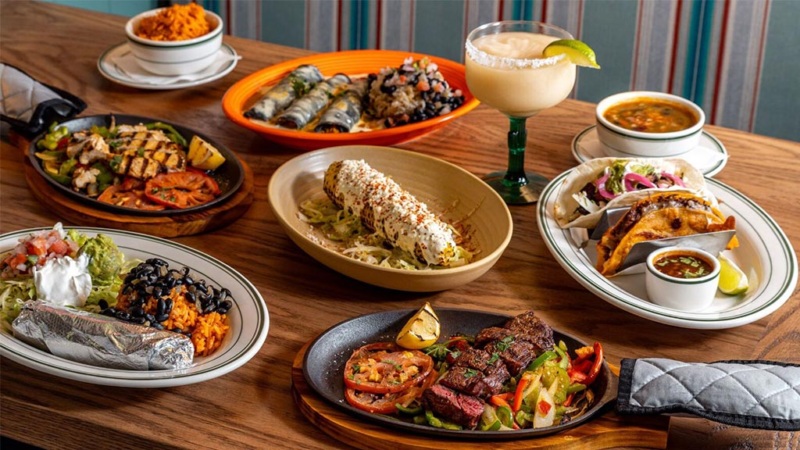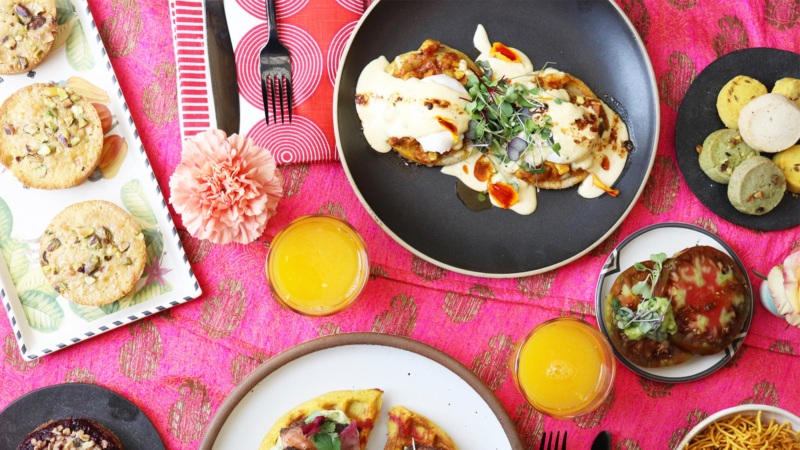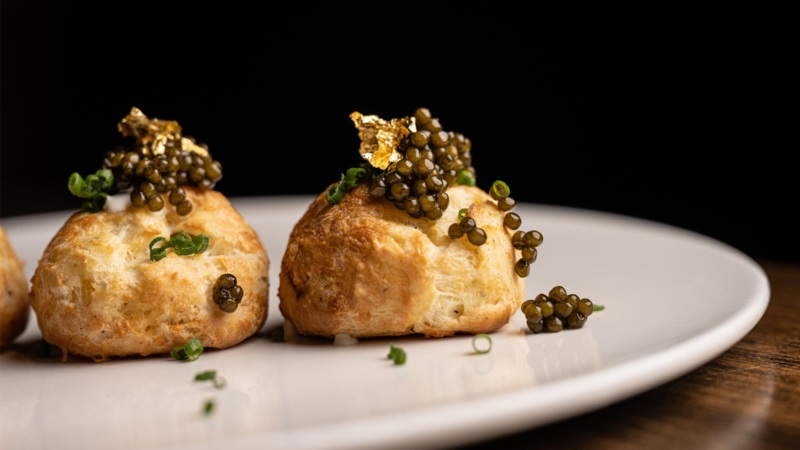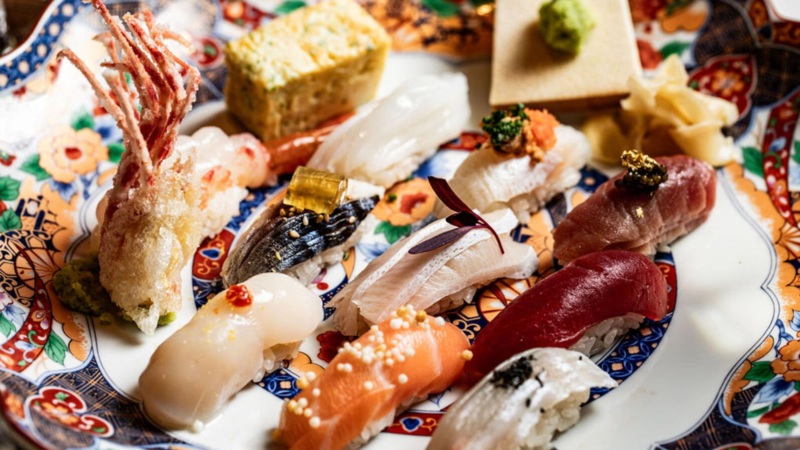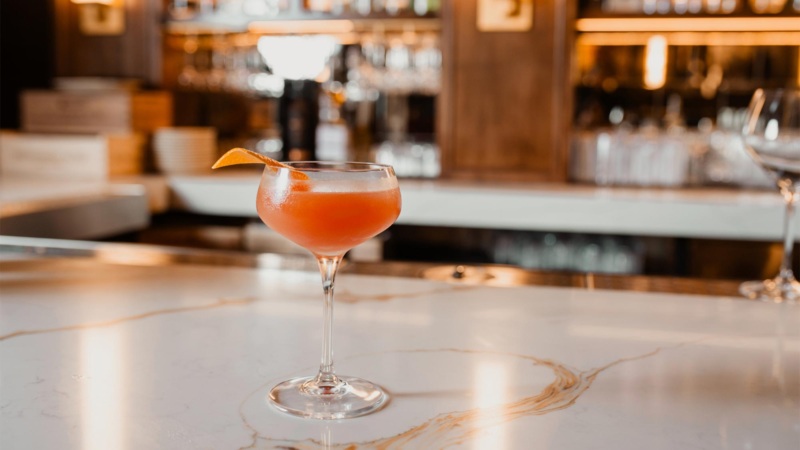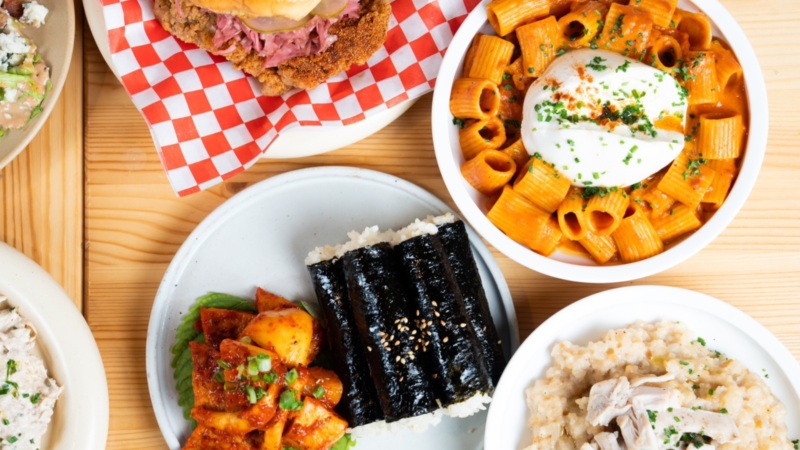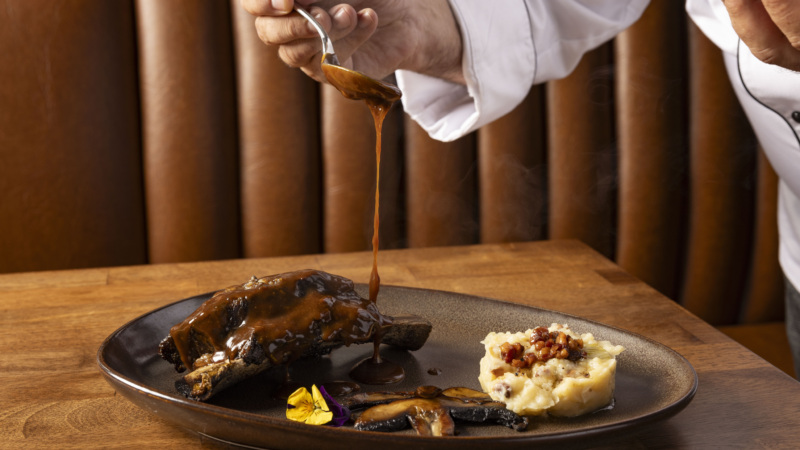
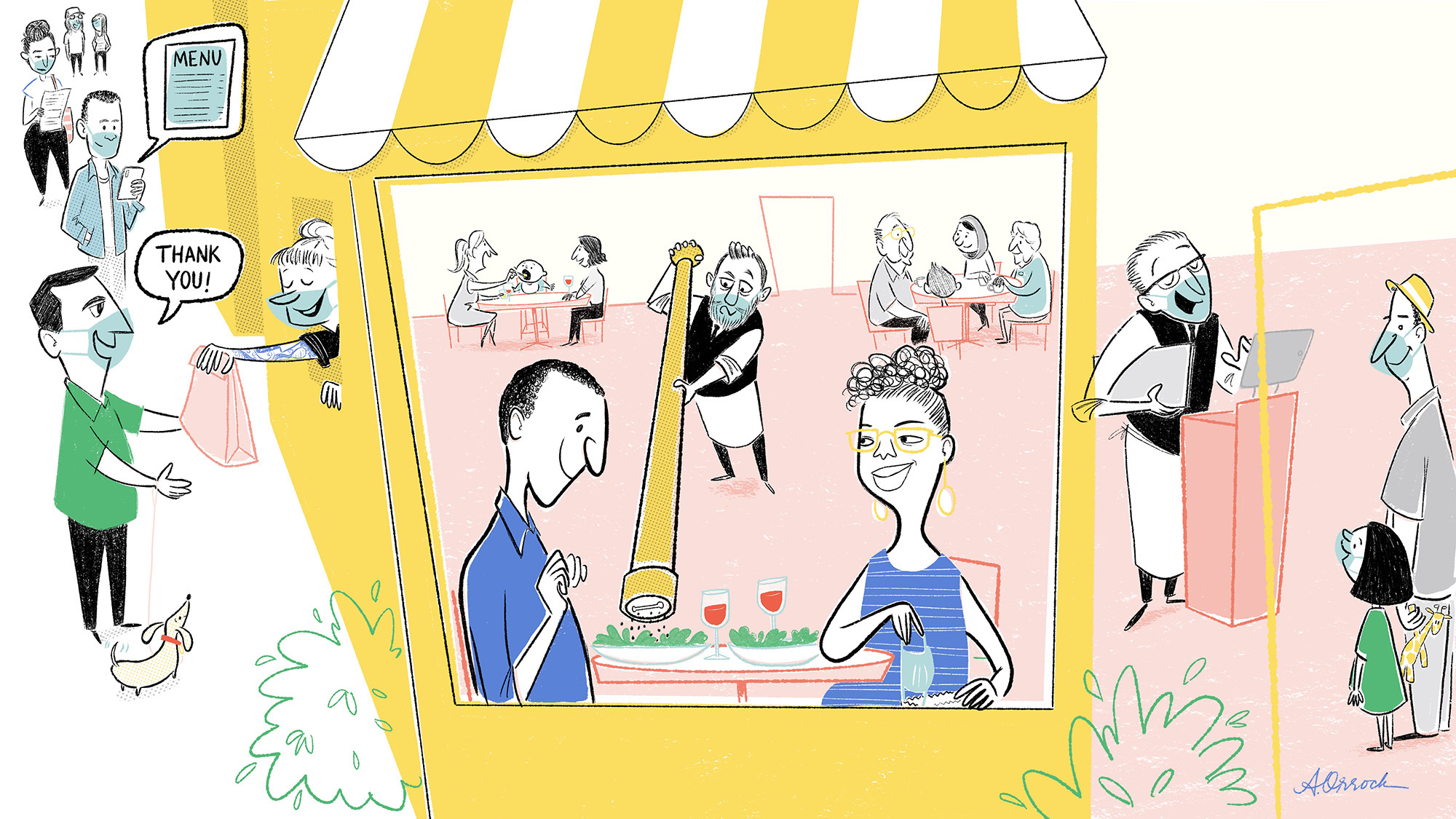
What Are the New Restaurant Manners? This Expert Has Answers
It’s been such a blitz of a few months — who knew from contactless delivery in January? — that it can be easy to forget dining was full of complexities well before COVID. And with some cities starting to reopen, anyone thinking about restaurants right now remains awash in all the can’ts of coronavirus-sensitive guidelines. No tableside guacamole or cheese carts. No more salt and pepper shakers on tables. Box your own leftovers.
But today, as before, the most complicated aspect of dining is … us. Yes, face masks and porthole-sized takeout windows. Yes, our living rooms are the new dining rooms. But with so many new rules, are we actually behaving well when we go to restaurants — or when they come to us?
Who else to ask but Lizzie Post, great-great-granddaughter of Emily Post, America’s preeminent arbiter of good manners, and co-president of the Emily Post Institute. There was no way, when she co-authored the latest edition—the 19th—of Emily Post’s Etiquette, that she could have envisioned the sorts of behavior we’ve been adapting. But as she points out, etiquette always evolves with the times, which is why the World War II edition of Etiquette included a supplement to reflect the hardship of the times.
What are good manners when you’re thinking about minimum safe distances and masks? How do we need to prepare for a new life at the table? She has answers. (This interview has been condensed and edited for clarity.)
Let’s start with where many restaurants are right now, which is takeout and delivery. What is an appropriate way, a polite way, to do each of those, starting with placing an order?
Online, you don’t have to worry about being patient. But on the phone, you do. The person who’s designated to take your order, if they’re not just designated to be taking orders, they’re likely doing other things, and interacting with whoever is in their location, or with other staff members. So just be patient. Place your order the way you always would. Say please and thank you. And follow instructions, what they say about picking it up or having it delivered. And if they haven’t said anything, feel free to ask.
What if you’ve actually gone in to place your order?
First thing to take notice of is: Is there a line out the door that looks oddly spaced apart? That would be our social-distance line. And that’s where you’d want to get in line, at the proper distance, to wait your turn.
Once you get inside, obviously a nice, friendly hello is really welcome right now. I’m assuming you’re wearing your mask. And you don’t take your mask down to talk to someone. Then you also want to make sure you’re giving space. For instance, if there’s space for more than one person inside at a time, you’d want to keep your space from whomever’s at the register.
The idea right now is: You’re not trying to have a lot of long interactions with people. And so knowing what you want to order ahead of time, or making a decision quickly on the menu, is really important. These are things where you used to just be able to step to the side, and let someone else go first. But with people trying to move everyone in and out quickly, I think that it’s important to know what you want, and order it quickly.
So, be prepared.
Yes! Be prepared. Lingering, indecision, anything like that ends up frustrating people.
Is there a good guideline for leaving a tip for takeout? Because even in the realm of tipping, this was already controversial.
There are a lot of questions as to what’s appropriate, especially because a lot of places won’t take cash right now. So that makes our ubiquitous tip jar a big old question mark. But think of tipping as fairly normal for everybody. It’s pretty much the standard it was for takeout before, either a couple of bucks, or 10 percent, maybe 5 percent, of the bill. That’s if you’re just picking it up and walking out the door.
And I think if you have the ability to give more than the usual, now is the time to do it. Restaurants are struggling, workers are struggling. Everybody’s struggling, frankly. So if you have the means to help, it’s a wonderful thing to do. The words gratitude and gratuity are tied for a reason; we’re saying thank you. And that’s one way Americans say thank you, is with a tip.
But I don’t want to turn around and say, everybody should be doing 35 or 50 percent, or you know what, you should give a 100-percent tip! We can’t say that, because there are so many people in difficult financial situations. And some of them are dependent on dining out, especially if their home doesn’t allow them to cook easily, or if their skill or personal comfort level doesn’t. And I think it’s really important to recognize that and not just automatically say, “Oh, you should be leaving more money than ever before.” We want to be careful not to pressure people who don’t have the finances to do that.
Let’s talk about delivery, the other half of this. What’s good behavior when someone’s coming to your house to drop off food?
The first thing is: Pay attention when you place your order to what their procedure tends to be. I’ve heard all kinds of things from delivery people. Maybe you need to meet them downstairs, or they’re not allowed to come up into apartment buildings. Or maybe it’s better to not meet them at all; they’ll leave the food on the doorstep, you leave a tip if they accept cash in an envelope at the door and you’ll collect your order once they’ve gone.
Certainly, if you do meet this person, you’re keeping a six-foot distance. You’re wearing a mask. You’re making it easy to do any kind of tip exchange if it’s allowed in cash form, or signing the check they may bring – most are doing tips ahead of time online from what I’ve seen. You’re trying really hard to limit the exchange.
But you can see how the whole dance becomes a little funky, right? With each delivery person, you’re trying to pay attention to their M.O., and also respect your own. So there’s going to be a bit of, “Oh do you want me to leave it there?” And, “If you could, just leave it there.” Be prepared for those kinds of conversations.
Same question, again, on tipping. What feels right? I know that’s become contentious.
It is contentious. You want to pay attention to the company you’re ordering from. Is the fee a delivery charge, or is it actually a tip that goes to the driver? And it’s ok for you to ask when you place your order. If you have a difficult or large order or a difficult home to get to for whatever reason, you can always, always add more. But what you don’t want to do is leave someone hanging. Ever.
But what’s appropriate?
We see a huge range, because it depends on that order and people’s budgets and tipping philosophies — anything between 5 and 20 percent tip is usually welcome, although 10 to 20% is more common, and generally between $2 to $10 per order. If, say, you order a $7 sandwich, a $2 tip isn’t that bad. Even though handing someone a $5 may feel better, it would be a big percentage of the order.
Now, let’s think about going back into restaurants. It’s safe to say reservations are essential for those spots that are open. And, I mean, it should be clear Resy is pro-reservation, so we don’t need to linger on that. But thinking about restaurants coming back: What should people expect when they actually get to the door?
Typically, from about 12 feet, or at least several paces back, you’re going to want to be looking at the front of that restaurant to see how they’re handling their greetings. There may be a line out the door of reservations waiting to be seated. I would expect to greet people [as a customer] wearing a mask, and to be greeted by employees who are wearing masks.
I think that coat checks would be really interesting — how they get used, whether they get used.
I assume if the host asks to take your temperature, that shouldn’t be taken in a hostile way, just an abundance of caution.
Yeah, I would expect the potential, at least, for either temperature-taking or for making a health declaration, simply that you’re declaring you’re healthy before you walk in. That you haven’t been in contact with anyone who has COVID. Those might be new normal.
We just haven’t seen yet what the U.S. restaurant industry is going to do in terms of trying to monitor, and also prepare themselves for contact tracing. It’s very possible that even when you place your reservation, or if it’s a place where you just walk up to the host or hostess stand, you may be asked for your email address, so that they could contact you for contact tracing. That would be very different from your usual, “Welcome to our place, we’re happy to have you dine with us this evening.” Know what I mean?
It sounds very clinical. But I’m guessing this isn’t a matter of trying to throw hospitality out the window. This is the hospitality of trying to make an experience safe.
Absolutely. And it’s just something none of us are used to. So it’s going to feel clinical, it’s going to feel different. The hope is that it also helps people to feel safe. And that they will want to frequent these places more often because they feel measures are being taken to protect them.
OK, you’re in the restaurant, you’re seated at the table. How should you behave, in terms of respecting distance? How do you manage your space?
Sit in your seat! [Laughs] But generally, you’re not getting up to hug your server or anyone else, you’re not walking over to lean on someone else’s table, or borrow their salt and pepper shaker. If you’ve got more than just the two of you, you might notice you’re spaced further apart, if you don’t live with the other people you’re dining with. And I don’t know: Are we going out to dine only with people we live with?
Yeah, who’s actually at that table? What’s an appropriate party size? Is it still going to be two couples, or three couples? Is three too many?
This is one where the science is going to be what dictates things. The safety measures that the CDC puts out are, I think, what most people will end up following. So if we’re still at groups of 10 or less, then my guess would be, your table can’t be bigger than 10 people. And those people are going to have to be spaced apart, depending on who lives in which houses.
I think that’s one way to imagine it. Another way is, only single or couple diners, or only families. And even that becomes funky. What constitutes your family? Is it the people in one household? For me, living alone, my sister and her husband live down the street and we are interacting. We’ve made a little pod. Do I get to go out with my pod? Do I have to prove on a piece of paper that I live at the same address? I’m very interested to find out how they determine the grouping of people being allowed to interact.
The social negotiations are going to be really complicated.
Oh my gosh, there’s going to be so many things people will figure out. I read the Black Sheep document and it’s so impressive. And yet at the same time you can imagine some restaurants just opening up and not doing as much. So it’s going to be a little bit of hit or miss for a while, while everyone tries to figure out what makes the most sense. And what also makes people feel safe, both workers and diners. Right? Because if diners don’t feel safe they’re not going to come out, but if workers don’t feel safe they’re not going to want to work.
When it comes to servers, the habit of lingering at the table, or reciting nightly specials … suddenly, these transactions are going to have to be more brief and less chatty — more European, in their way.
Your server will be certainly very friendly, very accommodating, but they’re going to have shorter interactions. And so the specials might just be printed up on a piece of paper, so your server doesn’t have to spend the time talking at close range. But also, how close do you think the server’s going to get to the table?
That’s a good question. Probably everyone is going to stand back a bit more.
Do you think they’ll start using, like a dessert cart or a cheese cart? Not to push the food across the room but for you to take it from?
Interesting. The service cart as a means of social distancing.
Yeah. As a delivery mechanism!
Funny, I was thinking about something else: the habit of coming back to offer pepper on your salad. That’s going away. Unless, maybe there’s a six-foot pepper grinder.
That brings to mind a Sex In the City episode! But seriously, I think about bread and olive oil in so many restaurants. Or the communal bread basket. I’d be curious if that stays communal.
Now, very important: The ritual of excusing yourself to go to the restroom, which used to be routine, and also had what we’ll call ancillary social value …
[Laughs] Group trips to the bathroom!
… that seems like it’s all going to change.
I think so. I’m very curious about when someone’s on a date, and we’re still physical distancing — which brings all kinds of questions to mind — but their purpose in going to the restroom isn’t actually to use the facilities. But to use the mirror, something like that. So you get up to go the restroom, and somebody else does too. You both know, there’s only one. And someone’s got to sit down and wait. Because you can’t really socially distance outside the door to the restroom. I’m wondering: How are we going to determine who gets to that bathroom first?
Finally, back to tipping once more: For dining, is it going to go back to where it was, with a 20-percent expectation? Is it going to, perhaps, as was the discussion before this began, move to a service-included model?
We’ve been struggling as a nation with this question of tipping, and how tipping should be practiced in America, for so long. I mean, Emily [Post, who published her first edition of “Etiquette” in 1922] talked about it in all sorts of different ways, so it’s been nearly 100 years. And I don’t know what we’re going to settle on as best practices. Those are the kinds of things that will emerge over time.
For now, I think we’re continuing our tipping practices as we have been — with the extra encouragement of, if you can give more, now’s the time to do it. And if you can’t, again, we don’t want to stress people out over that.
But you know, a lot of people in the restaurant industry, the reason they don’t want to see tipping standardized is they don’t feel it will help them out financially. And I’d be curious, when we see what our new restaurant industry looks like, it will be interesting to see if it will be looked at as favorable to have that secure sense of how much you’d be making each night, or whether that ends up being impossible.
Jon Bonné is Resy’s managing editor. Follow him on Instagram and Twitter. Follow @Resy, too.
Discover More


